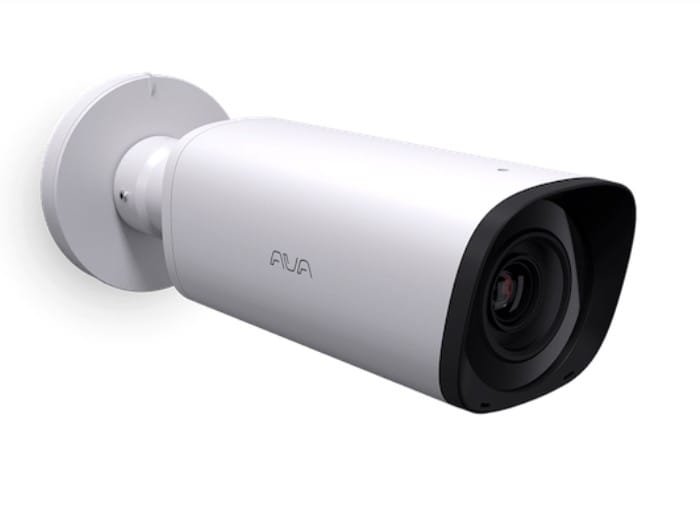If you’re thinking about adding security cameras to your home or business, it’s important to know the different types available and what each one is best used for. This guide will help you understand the main types of security cameras, how they work, and where they work best—so you can choose the right one for your needs.
1. Dome Cameras
What they look like: A small camera inside a clear, dome-shaped cover.
Best used for: Indoors—like in offices, lobbies, stores, or hallways.
Why they’re useful:
The dome shape hides where the camera is pointing, which makes it harder for people to avoid being seen.
- They look neat and can blend in with the ceiling or walls.
- Some are made to resist tampering or vandalism.
- Many have built-in night vision to record clearly in the dark.
2. Bullet Cameras
What they look like: Long, tube-shaped cameras that are easy to notice.
Best used for: Outdoor areas like building entrances, parking lots, or fences.
Why they’re useful:
- Because they are visible, they act as a strong deterrent to trespassers.
- Built to withstand harsh weather.
- Often come with adjustable lenses, so you can focus on a specific area at a distance.
3. PTZ (Pan-Tilt-Zoom) Cameras
What they do: These cameras can move from side to side (pan), tilt up and down, and zoom in or out.
Best used for: Large areas like warehouses, stadiums, parking lots, or shopping centers.
Why they’re useful:
- One PTZ camera can cover a wide area, reducing the number of cameras you need.
- You can control the movement manually or set it to scan an area automatically.
- Great for following suspicious activity or zooming in on details like faces or license plates.
Something to keep in mind: PTZ cameras have moving parts, so they may require more maintenance over time.
4. Turret Cameras (Eyeball Cameras)
What they look like: A small ball-shaped camera that sits in a socket.
Best used for: Both indoor and outdoor settings, especially where you want clear night vision.
Why they’re useful:
- They’re easy to adjust and don’t have a dome cover, so there’s less glare at night.
- Usually offer good image quality.
- Compact and less noticeable than bullet cameras.
5. IP Cameras (Network Cameras)
What they do: These cameras connect to your network using a cable or Wi-Fi and send video digitally.
Best used for: Homes or businesses that need high-quality video and remote viewing.
Why they’re useful:
- They often record in high definition (HD) or even 4K.
- You can check the video feed from anywhere using a smartphone, tablet, or computer.
- Easy to expand—add more cameras later without needing a full system change.
Many offer smart features like motion detection, alerts, and video storage in the cloud.
6. Thermal Cameras
What they do: These cameras detect heat (infrared radiation) instead of visible light.
Best used for: Areas with no light, fog, smoke, or where regular cameras can’t see well—like remote outdoor spaces or industrial zones.
Why they’re useful:
- It can detect people, animals, or vehicles even in complete darkness.
- Useful for night-time security, search-and-rescue operations, and fire safety.
7. Fisheye Cameras
What they do: These cameras have a very wide-angle lens—often capturing a 180° or 360° view.
Best used for: Large indoor spaces like classrooms, retail stores, banks, or open-plan offices.
Why they’re useful:
- One camera can see everything in a room—no blind spots.
- Saves money by reducing the number of cameras needed.
Comes with software that flattens the image, so it’s easier to view and understand.
8. Wireless Cameras
How they work: These cameras send their video over Wi-Fi or a mobile signal, so you don’t need long cables.
Best used for: Homes, small businesses, or temporary setups where running wires is difficult.
Why they’re useful:
- Easy to install, often in just minutes.
- Can be battery-powered, making them portable.
- Great for renters or short-term needs.
Things to consider: You’ll need a strong Wi-Fi signal, and it’s important to use secure passwords to prevent hacking.
Analog vs. IP Cameras: What’s the Difference?
When choosing a security camera, you’ll also come across two main types of technology: analog and IP.
Analog Cameras:
- Send video through cables to a recorder (like a DVR).
- Tend to be more affordable.
- Usually have lower resolution than digital cameras.
- Good for small systems or basic monitoring needs.
IP (Internet Protocol) Cameras:
- Send digital video through a network (wired or wireless).
- Offer better video quality, including HD and 4K.
- Can be accessed remotely through apps or online platforms.
- Easier to add onto—ideal for growing systems.
Although analog systems are cheaper upfront, IP cameras often offer better long-term value thanks to their features, quality, and flexibility.
Choosing the Right Camera for Your Needs
Picking the right camera depends on several factors:
- Location – Is it going indoors or outdoors?
- Coverage area – Do you need to monitor a small room or a large open space?
- Lighting – Will the camera work in low light or complete darkness?
- Visibility – Do you want it to be discreet or act as a visible deterrent?
- Installation – Can you run wires easily, or do you need a wireless option?
- Image quality – Do you need to capture small details like faces or license plates?
- Smart features – Do you want motion alerts, remote access, or cloud storage?
Example Setups
Here’s how you might combine different cameras:
For a retail store: Dome cameras inside for a discreet look, a bullet camera at the front door, and a PTZ camera covering the parking lot.
For a warehouse: Use a PTZ camera to monitor open areas, a turret camera at entrances, and thermal cameras to detect heat changes at night.
For a home: Dome or turret cameras inside, wireless cameras for the backyard, and a doorbell camera for package deliveries.
Why the Right Mix Matters
No single camera does it all. Combining the right types based on their strengths gives you the best coverage, security, and value for your money. With the right setup:
- You can avoid blind spots.
- You’ll be able to react quickly to any alerts.
- You can monitor everything from your phone, even if you’re far away.
Read also How CCTV Security System Helps in Building a Business?
Final Thoughts
There are many types of security cameras, each designed for a different job. Some are made to blend in; others are meant to stand out. Some give you a wide view; others zoom in for detail. Some are great in the dark; others are best in bright light.
By understanding the strengths of each type, you can build a system that truly works for your space—whether it’s your home, office, or business.
Security isn’t just about cameras. It’s about peace of mind—and choosing the right tools to help you protect what matters most.






Leave a Reply